MWD Photo Shoot: Composition
Photo courtesy of DoD photographers.
Once we understand some of the uses of the camera and lighting, we now turn to concepts of great photo composition.
1. The Rule of Thirds: Many photographers attempt to center their image in the middle of the viewfinder. Instead, in your mind’s eye, overlay your image with two horizontal and two vertical lines to produce 9 equal segments in your photo. A more interesting place to place the focal point of your photograph is where two of these lines intersect.
Here are some examples where you might easily see this element of composition illustrated.
Photo courtesy of DoD photographers.
2. Leading lines: Our eyes follow lines. How these are included in the composition of your photograph will determine how the viewer’s eyes are drawn through the image.
Two images showing lines leading the eyes through the photo are included below.
U.S. Navy photo by Mass Communication Specialist 2nd Class Robert Whelan
In the photo below of the tracking dog, the line of the highway edge is clear as is the line of trees in the background. My eyes are drawn from the front right back towards the left. Are yours? In the photo below of Taran and his handler, Mras on the train, the lines in the photo draw you from the left to the right instead.
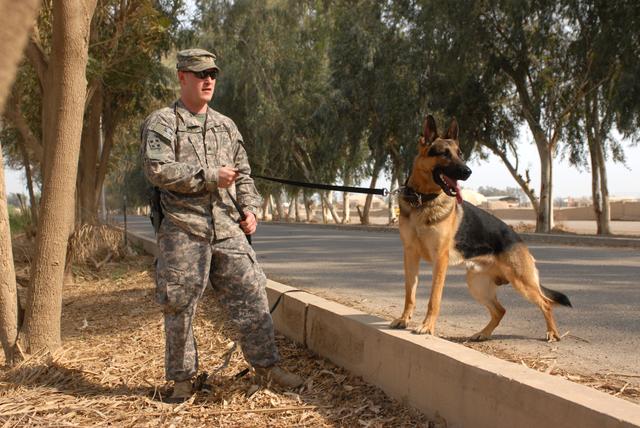
U.S. Army Sgt. Zachary Delk and military working dog, Nero M707, attached to 2nd Brigade, 1st Cavalry Division, conduct track training in Baghdad, Iraq, April 3, 2009. Track training teaches a dog to track by scent as well as sight. (U.S. Navy photo by Mass Communication Specialist 2nd Class Robert Whelan/Released)
Photo above is courtesy DoD photograph.
3. Patterns, repetition and symmetry – Repetition of shapes and visuals can place the focus on your subject. In the top photo, the repetition also serves to showcase how many bags have to be searched.
U.S. Air Force photo by Perry Aston
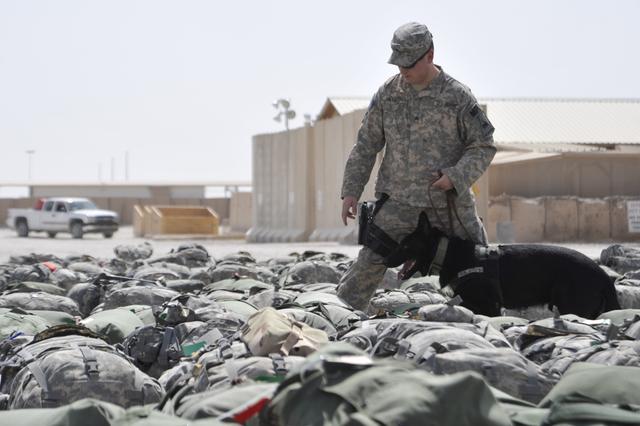
U.S. Army Sgt. Todd Neveu, a military working dog (MWD) handler, and his dog, Gino, search baggage for drugs before the bags are loaded onto a plane July 25, 2010, at Al Asad Air Base, Iraq. MWD teams randomly inspect baggage and personnel as U.S. forces transit through the base. (U.S. Air Force photo by Perry Aston/Released)
Notice that some photographs include more than one element of composition. In the photo below, there is repetition in the arches, but the top of the bridge and the trees form lines lead your eyes towards the back of the photo.
Photo below credited to the DoD.
4. Viewpoint -Try taking your photos from a variety of angles and viewpoints. Each viewpoint will give you a different outcome and the photograph will convey a different feel and message. Above, direct and from below all will add character to your photographs depending on the subject. For great portraits, try photographing from slightly below eye level on the dog. Here are two other photos taken from two other viewpoints.
DoD photo by Perry Aston, U.S. Air Force.
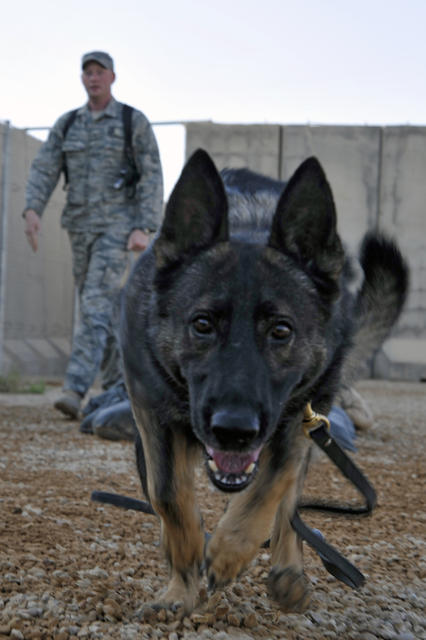
Ali, a U.S. Air Force military working dog, runs to the next obstacle on a training course at Asad Air Base, Iraq, on July 25, 2010. The obstacle course provides exercise and obedience training for military dogs. DoD photo by Perry Aston, U.S. Air Force. (Released)
Below: U.S. Air Force photo by Airman 1st Class Rusty Frank
5. Background – Always be aware of the background when shooting photos of your dog. You will want to consider color, distracting or uncomplimentary items (flowers appearing to come out of dog’s head for example). In the case of MWDs, including maps??? Maybe not a good idea. Remember the camera catches everything it sees, not just what the photographer is hoping to capture.
Here are some great backgrounds that really add to the story of the MWD being photographed.
The following photo is one of my favorites submitted to us by the handler, Daniel Fulton. The blue sky and desolate background add to the surreal surroundings in the deserts of Iraq.
Marine photo below by Gunnery Sgt. Bryce Piper
Enjoy practicing your craft. For every 25 photos you take, you may get only one or two that are worth keeping. That’s okay. As I said previously, pixels sacrificed in the search of a great photo are easily spent.
Send us MWD photos that you would like to share at info@mwdtsa.org. Happy Shooting!

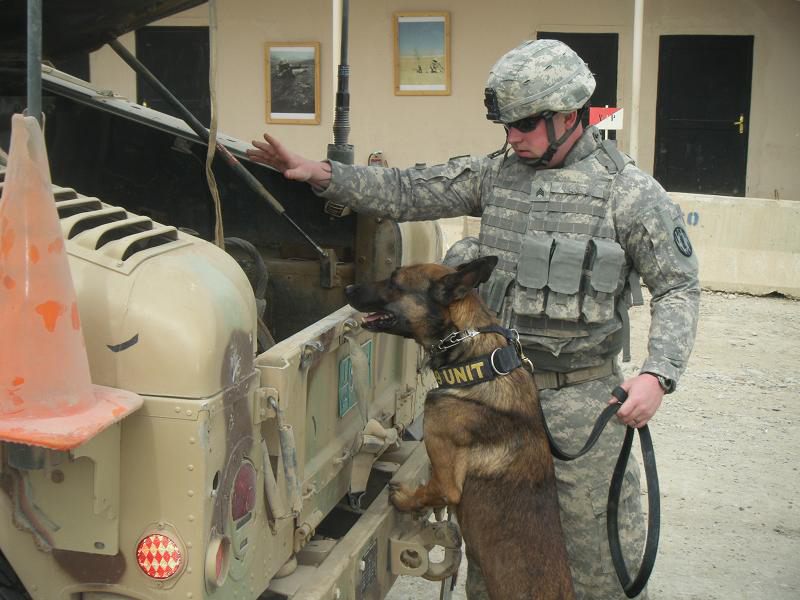
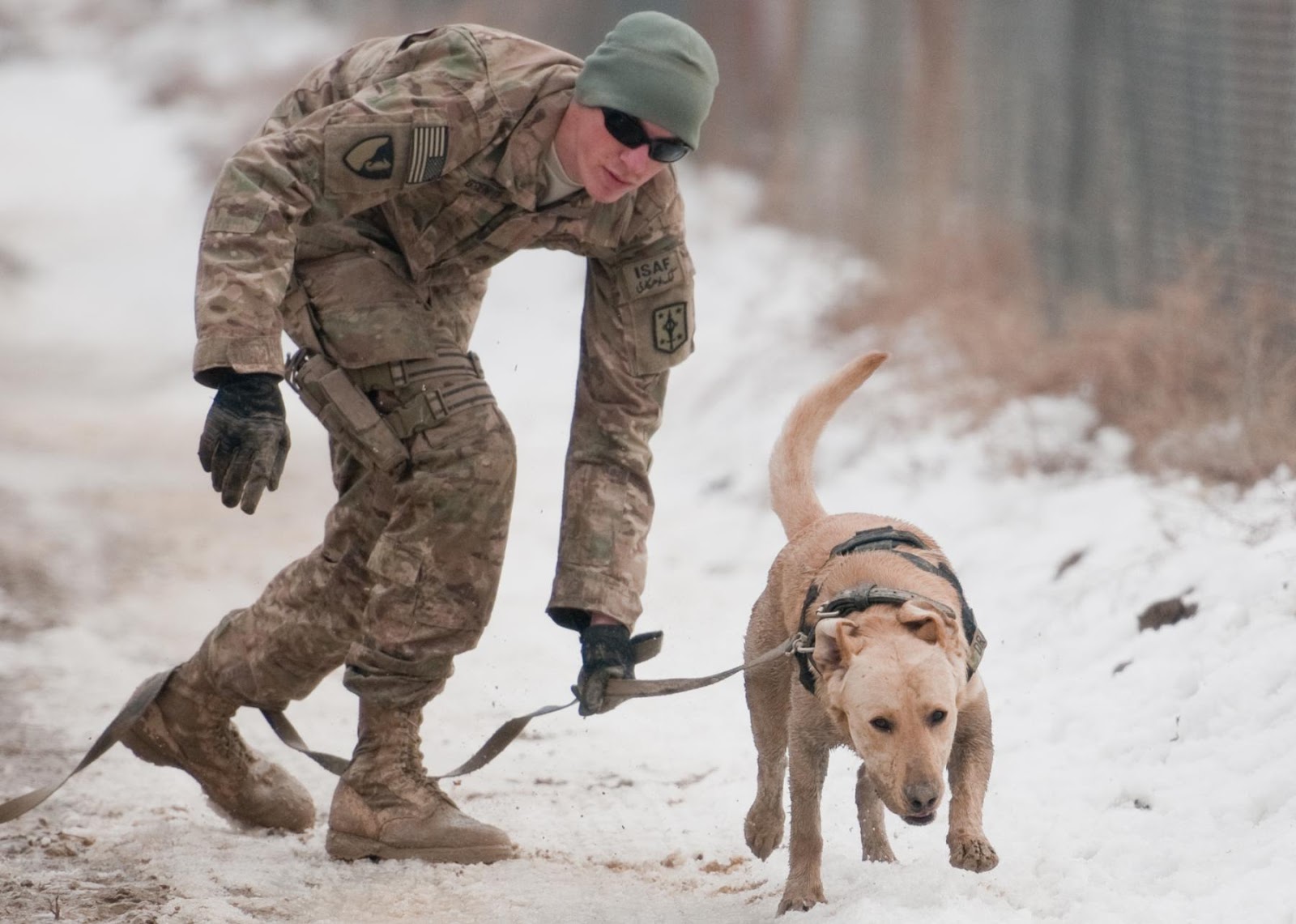
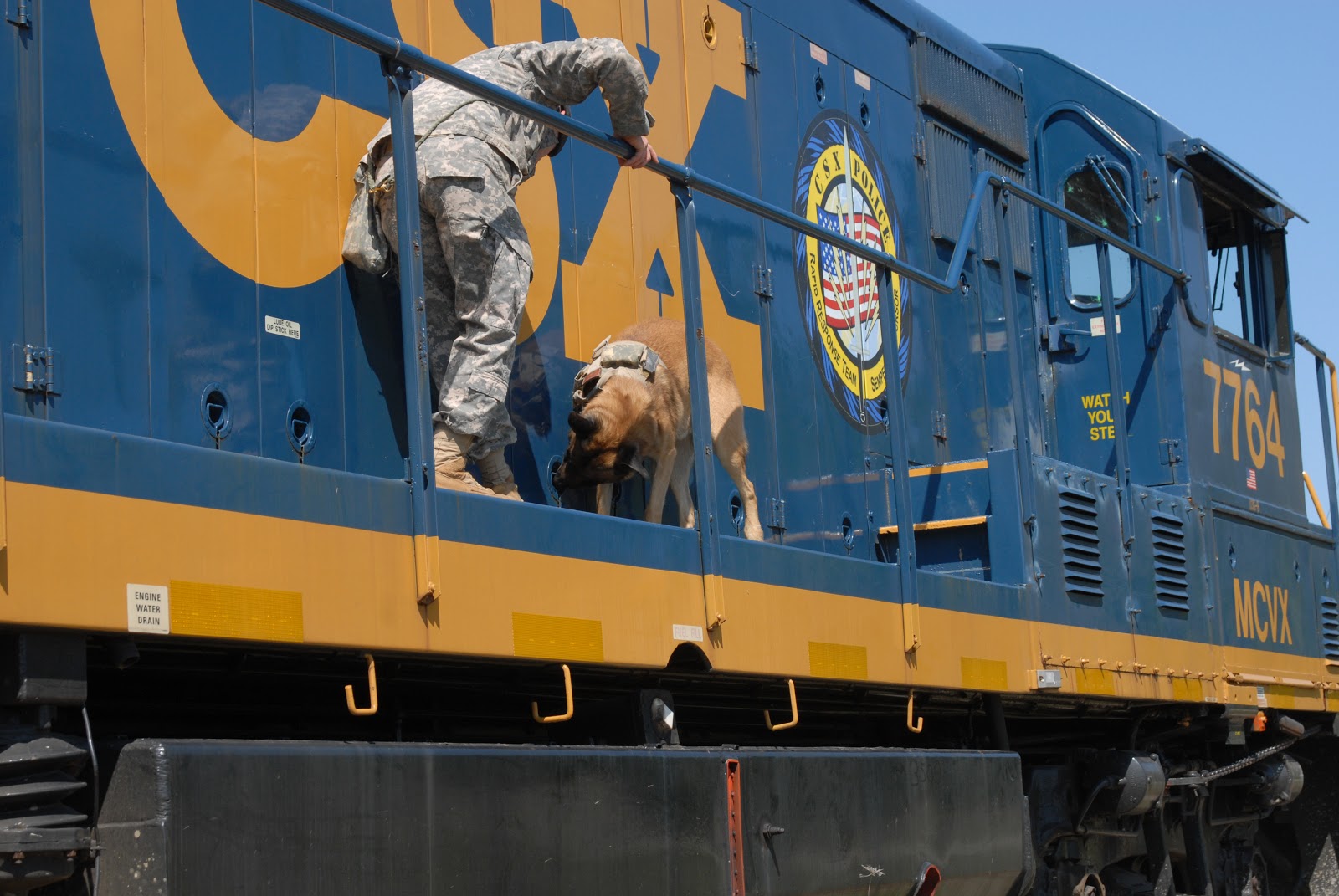

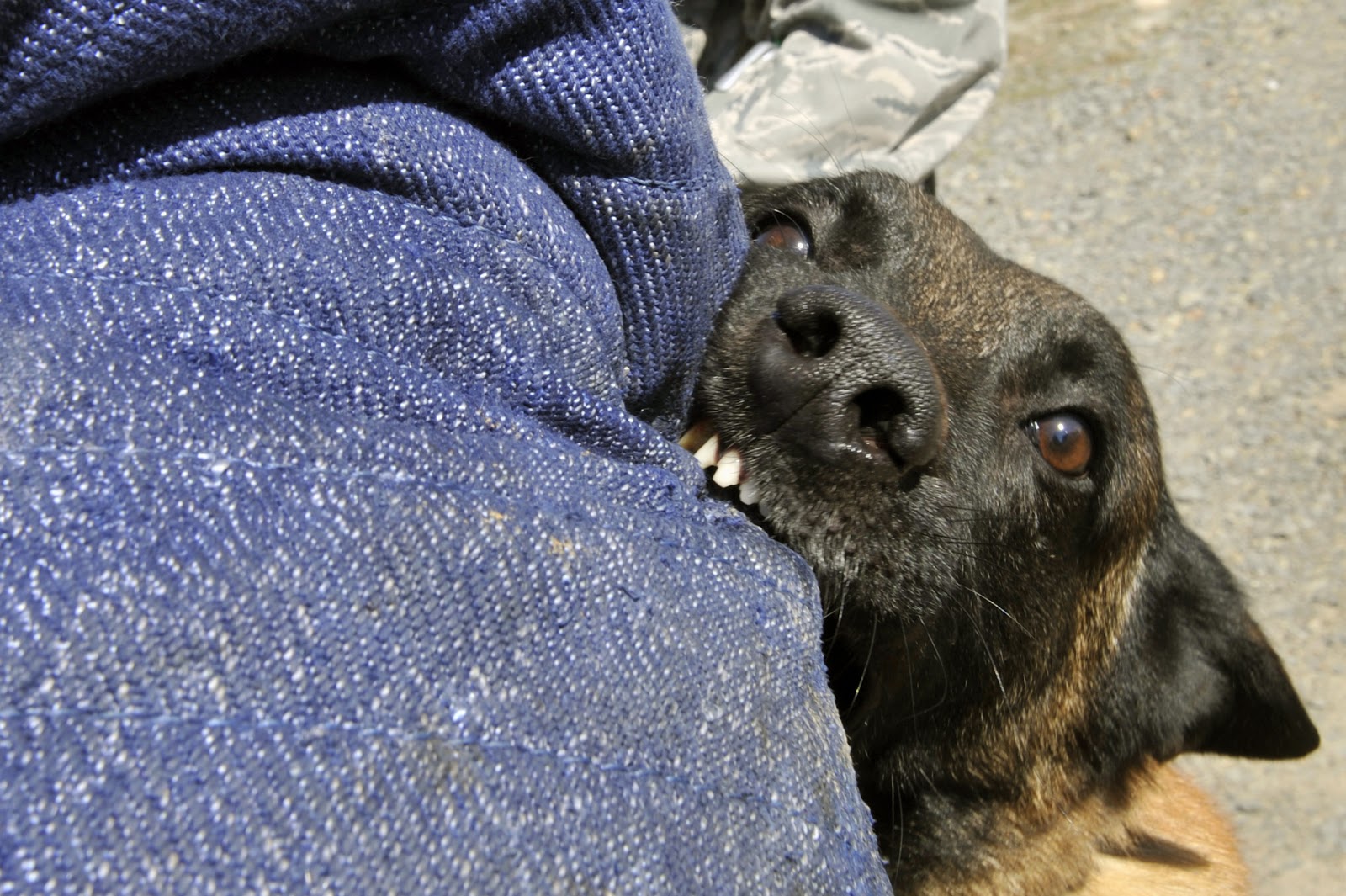
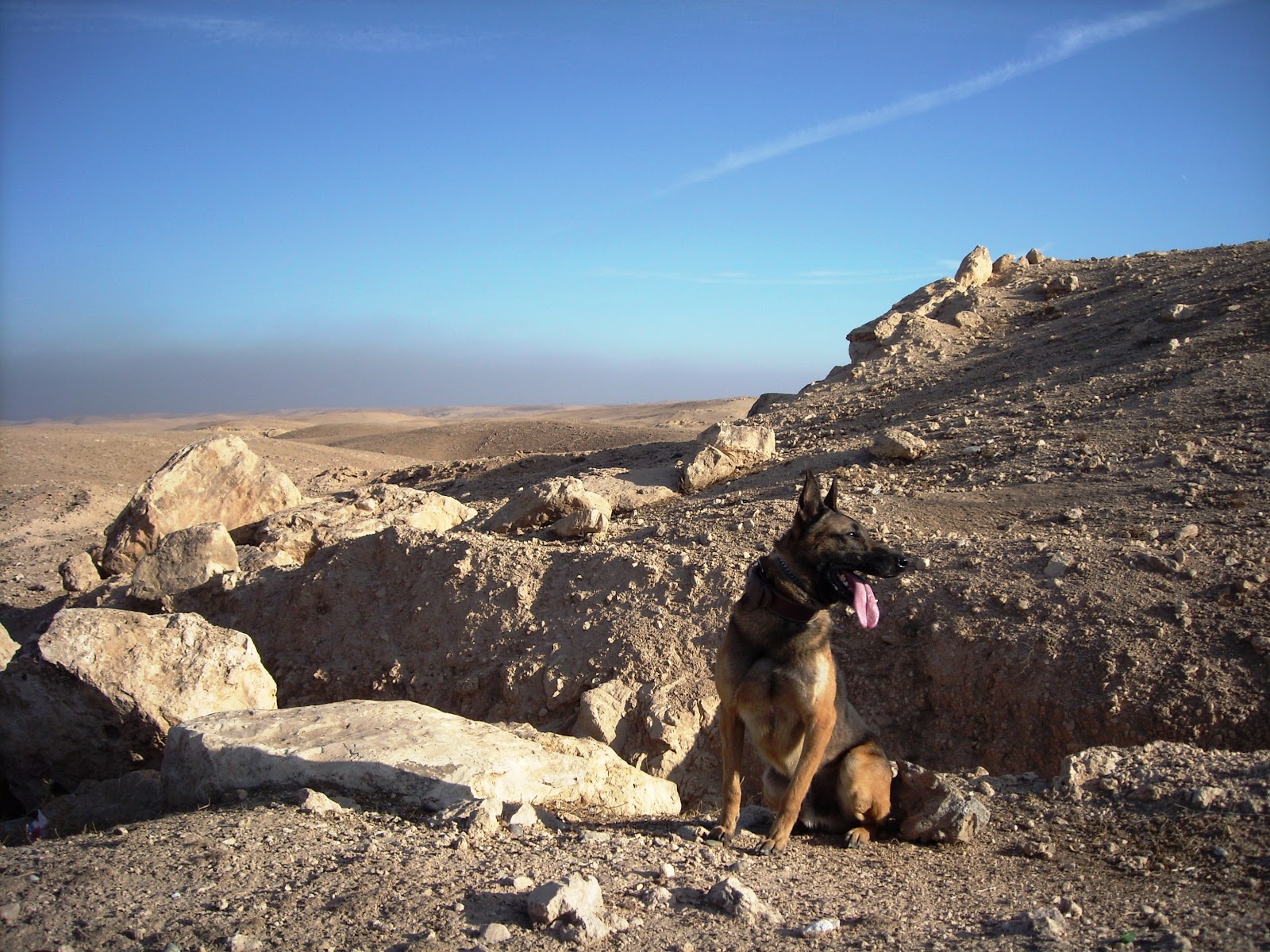
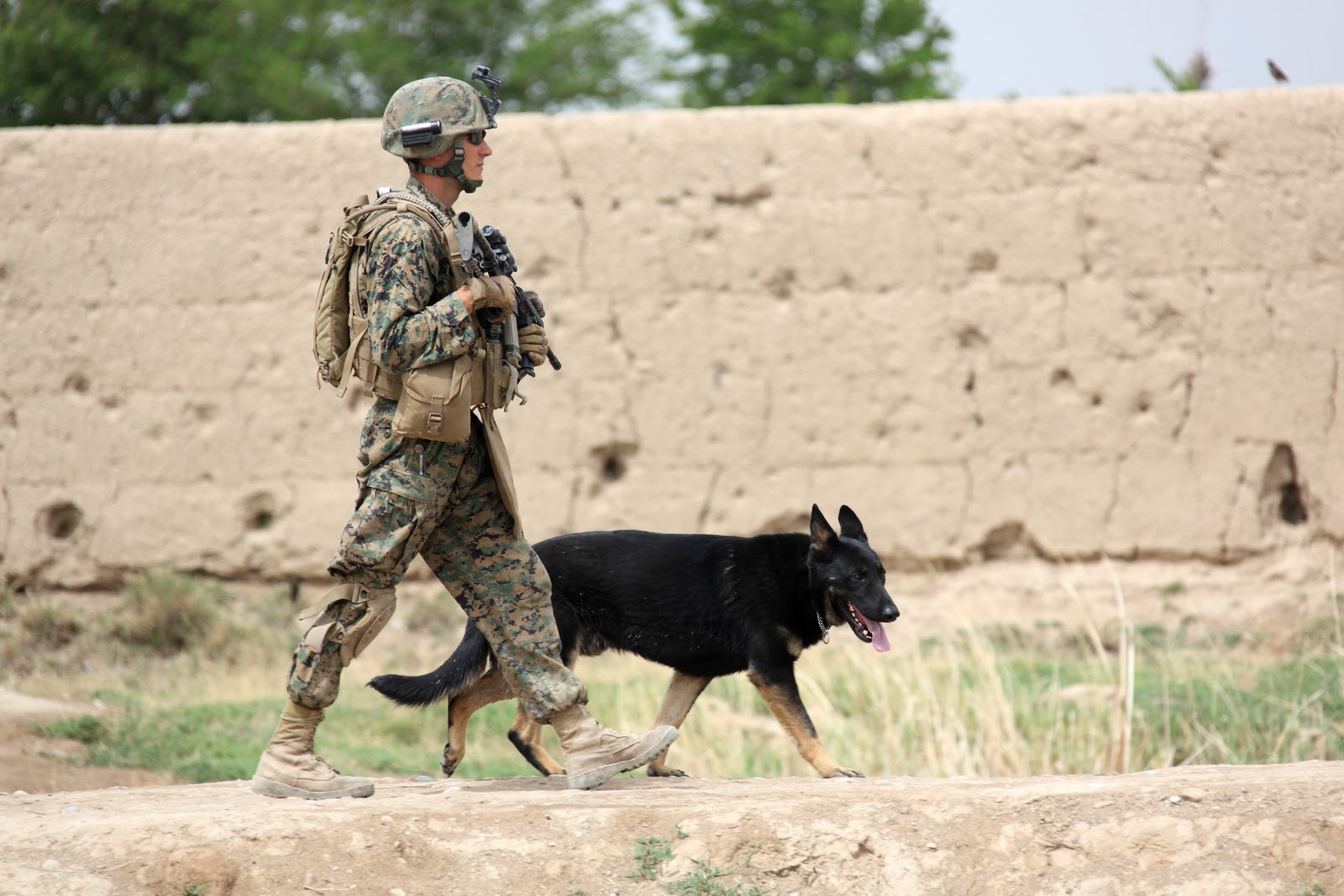
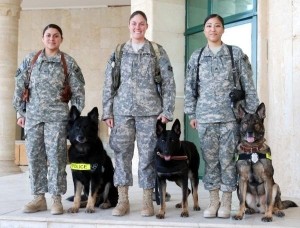
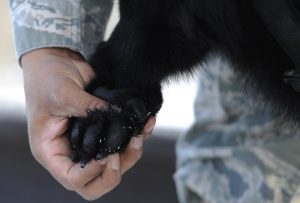
Leave a Reply
Want to join the discussion?Feel free to contribute!